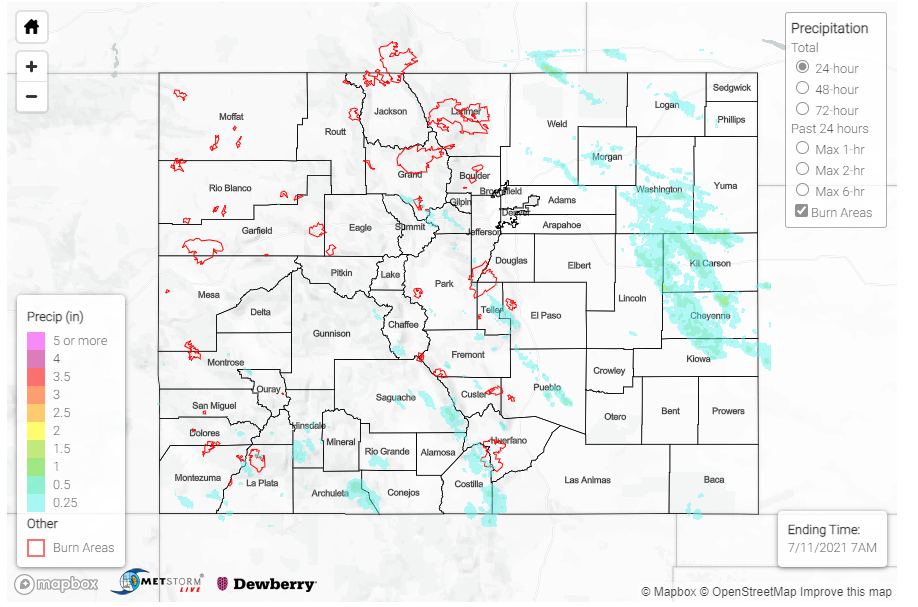Issue Date: Saturday, July 10, 2021
Issue Time: 9:00 AM MDT
Summary:
Isolated showers began to develop in the early afternoon in the Southwest Slope and San Juan Mountains, and along the Colorado-Wyoming Border in the Front Range Mountains yesterday before filling in to the Northern and Central Mountains and Palmer Divide as well. Locations lucky enough to be under a cell received heavy precipitation: 1.40 in was reported in Crestone according to a CoCoRaHS observer and nearby 0.75 inches was reported from Sand Dunes RAWS station. Elsewhere, a flash flood warning was issued in Central Grand County, though no flooding reported.
Gusty outflows from thunderstorm activity strengthened fire behavior on some of the high elevation fires. Another fire, the Morgan Creek Fire, was ignited in North Routt County mid-day.
As the day progressed, severe thunderstorms developed on the Northeast and Southeast Plains, with high winds as the biggest threat. Up to 86 mph wind gusts were reported in Granada in the southeast, and 70 mph in Iliff in the northeast. There were stiill some high precipitation totals associated with the storms on the Eastern Plains, including 0.69 from CoCoRaHS observer in Arriba in Lincoln County and 0.35 in Kit Carson. Check out the State Precipitation Map at the bottom of today’s post for rainfall estimates in your area.
The Northwest Slope and Grand Valley stayed dry yesterday, but experienced extremely hot conditions. Grand Junction saw all-time record setting heat yesterday, with a high of 107 degrees.
BREAKING: At 4:54 PM MDT, the Grand Junction Regional Airport set a new ALL-TIME record high temperature of 107 degrees. This breaks the old all-time record of 106 from July 21, 2005. Records at Grand Junction go back to 1893. #COwx pic.twitter.com/tMo8S3Wj0p
— NWS Grand Junction (@NWSGJT) July 9, 2021
Click Here For Map Overview
Note: The 24-hour, 48-hour and 72-hour total precipitation do not contain bias corrections today due to errors in the CoCoRaHS data. This means there may be underestimations in QPE over the southwest and southeast corners of the state.
